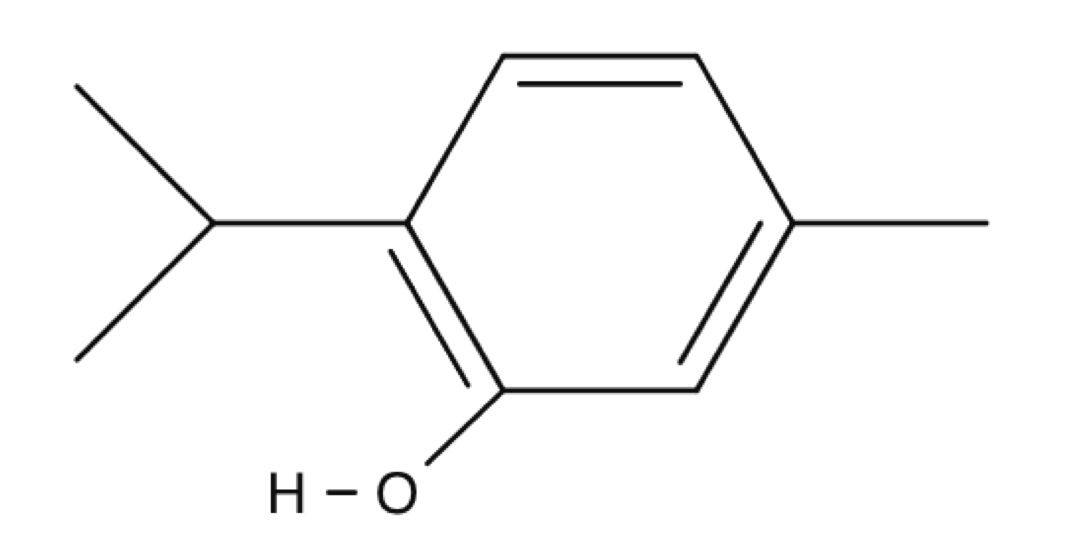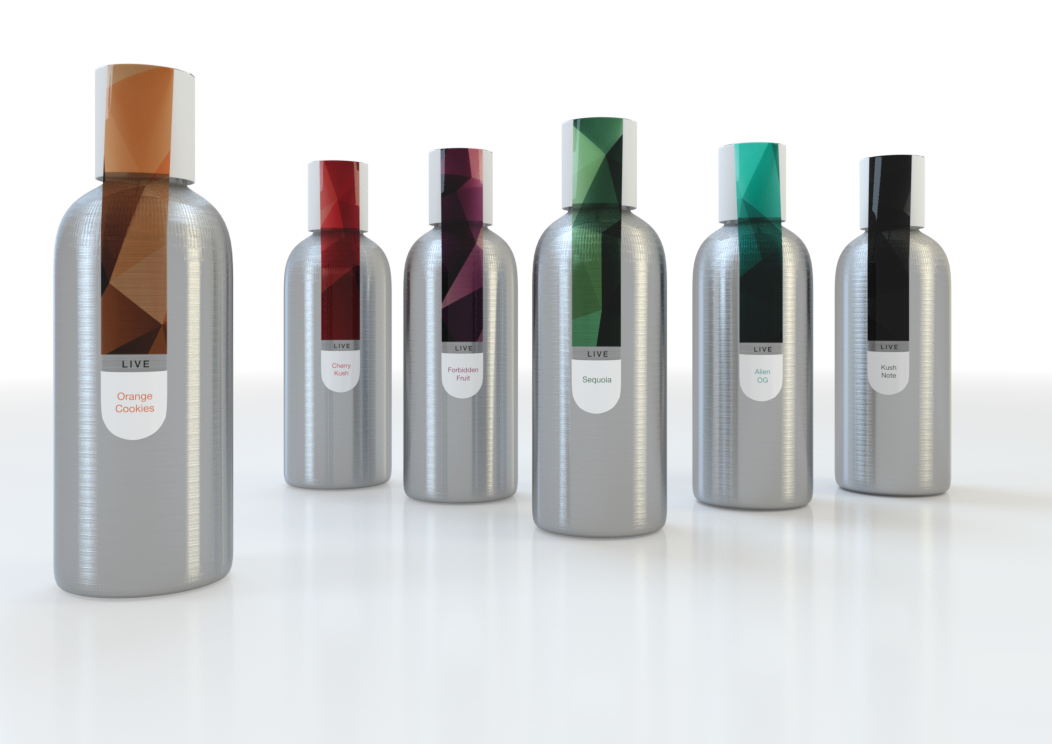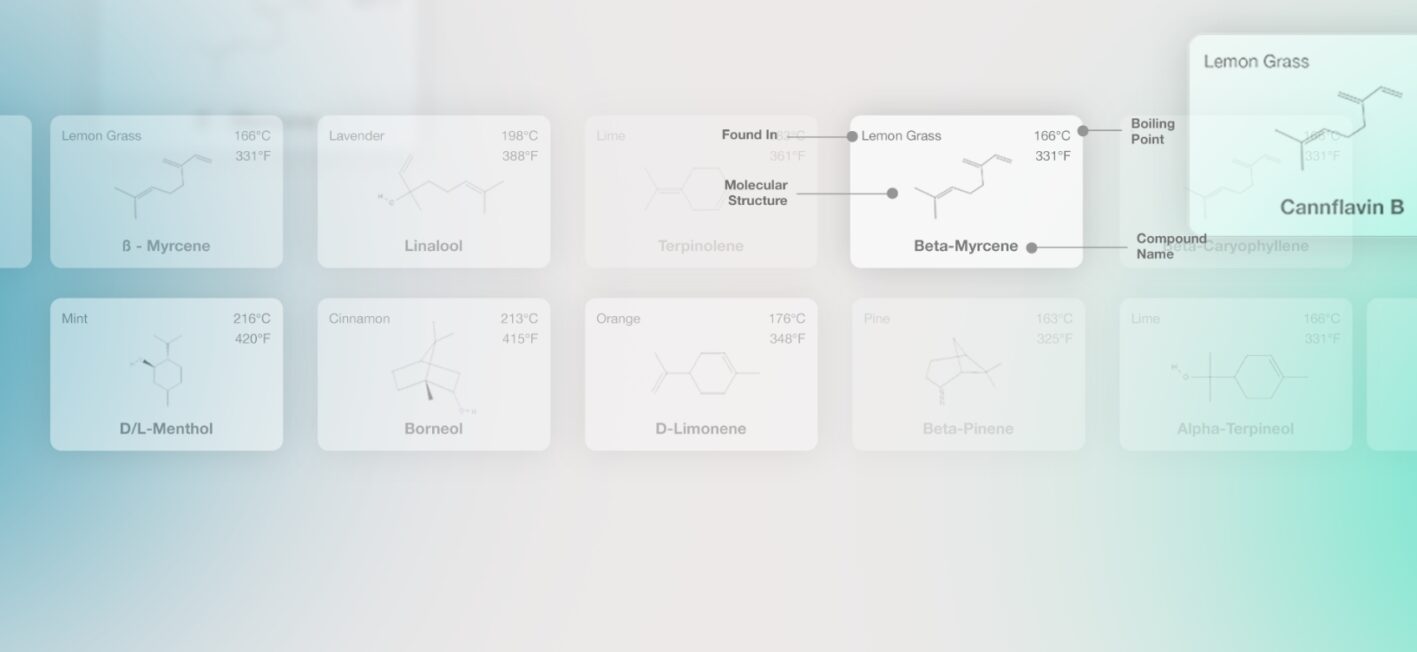Thymol – Terpene Profile
The primary flavor component of its namesake, thyme, Thymol is also found in an abundance of fruits, herbs, and cheese, including blueberry, mango, licorice and Gruyere. With a forest taste profile of wood and spice along with a gentle, sweet aroma, Thymol lends itself well to hard candies and dessert. As a natural disinfectant, Thymol is an established healing agent in septic, fungal, and bacterial disorders. As such, the terpene is a key component in oral healthcare products such as toothpaste and mouthwash.

Medicinal qualities:
In vivo
Anti-inflammatory & Wound healing
Anti-inflammatory and cicatrizing activities of thymol, a monoterpene of the essential oil from Lippia gracilis, in rodents
Riellaa, K. R., Marinhoa, R. R., Santosa, J. S., Pereira-Filhob, R. N., Cardosob, J. C., Albuquerque-Junior, R. L. C., & Thomazzia, S. M. (2012)
Prevention of bone destructive diseases
Thymol inhibits RANKL-induced osteoclastogenesis in RAW264.7 and BMM cells and LPS-induced bone loss in mice.
Sapkota, M., Li, L., Kim, S. W., & Soh, Y. (2018)
Improved antioxidant brain status
Effect of thyme oil and thymol dietary supplementation on the antioxidant status and fatty acid composition of the ageing rat brain
Youdim, K. A., & Deans, S. G. (2000)
In vitro
Antimicrobial
Mechanisms of Antibacterial Action of Three Monoterpenes.
Trombetta, D., Castelli, F., Sarpietro, M. G., Venuti, V., Cristani, M.,Daniele, C., Saija, A., Mazzanti, G., & Bisignano, G. (2005)
Evaluation of Combined Antibacterial Effects of Eugenol, Cinnamaldehyde, Thymol, and Carvacrol against E. coli with an Improved Method
Pei, R. S., Zhou, F., Ji, B. P., & Xu, J. (2009)
Activity of thymol, carvacrol, cinnamaldehyde and eugenol on oral bacteria
Didry, N., Dubreuil, L., & Pinkas, M. (1994)
Antimicrobial efficacy of chlorhexidine digluconate alone and in combination with eucalyptus oil, tea tree oil and thymol against planktonic and biofilm cultures of Staphylococcus epidermidis
Karpanen, T. J., Worthington, T., Hendry, E. R., Conway, B. R., & Lambert, P. A. (2008)
Anti Inflammatory
Anti-Inflammatory Activity of Thymol: Inhibitory Effect on the Release of Human Neutrophil Elastase
Braga, P. C., Dal Sasso, M., Culici, M., Bianchi, T., Bordoni, L., & Marabini, L. (2006)
Vasorelaxant
Vasorelaxant effects of the monoterpenic phenol isomers, carvacrol and thymol, on rat isolated aorta
Peixoto-Neves, D., Silva-Alves, K. S., Gomes, M. D., Lima, F. C., Lahlou, S., Magalhães, P. J., Ceccatto, V. M., Coelho-de-Souza, A. N., & Leal-Cardoso, J. H. (2009)


